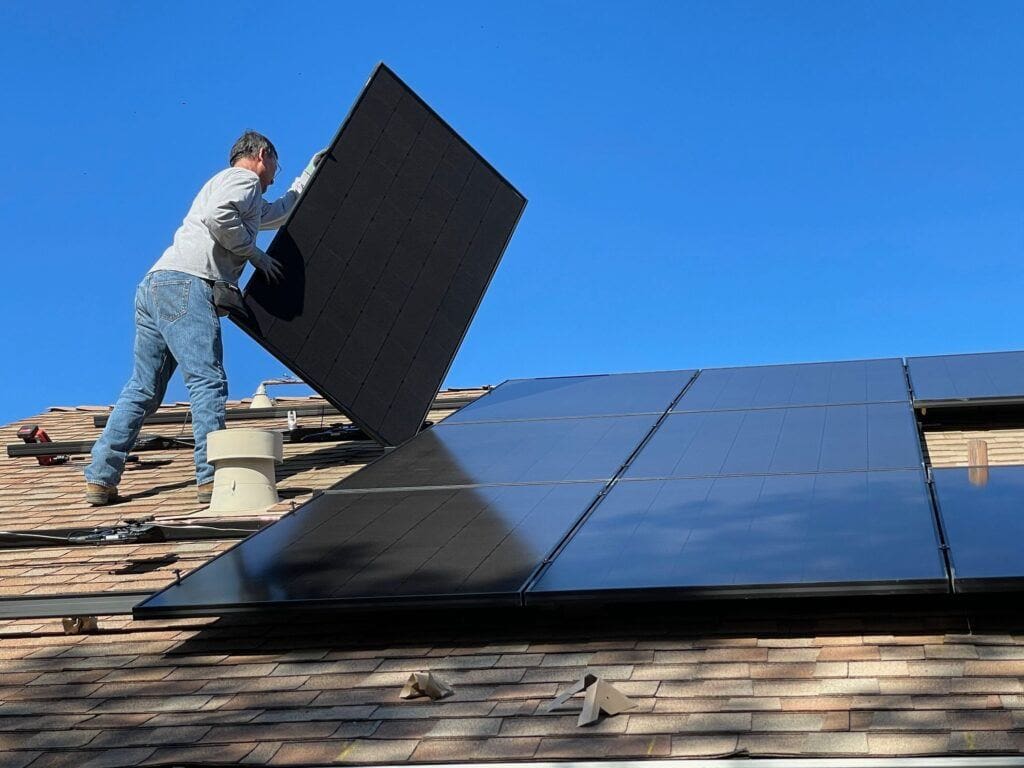With the sun low in the sky, should Solar Panels be high on your list?
Ireland is installing solar panels at a rapid rate, which means that demand for installations is up. So if you want to get ready for the summer…maybe now is the time to get organised? Here’s our Top Tips to get you started along the road to lower energy bills.
1. Understanding Your Energy Needs
Before digging deep into your pockets, assess your household’s energy consumption. Understanding your needs lets you determine the appropriate size of the solar panel system that suits you best. Consider factors like the number of occupants, daily energy usage patterns, and any plans for future expansion. This crucial step ensures that your solar panel installation meets your energy needs in the coming years. A great way to do this is really dig into the detail on your bills over the last year to get an idea of how much you use.
2. Choose the Right Solar Panel Type
Solar PV technology is evolving at a rapid rate, offering various panel types to suit different needs. Monocrystalline, polycrystalline, and thin-film solar panels each have benefits and drawbacks. Monocrystalline panels are known for their high efficiency, making them suitable for small rooftops. Polycrystalline panels are typically cheaper and offer good performance in diverse conditions. Thin-film panels tend to be lightweight and flexible, making them a viable option for specific installations. Make sure you consult with the installer about which one works best for you, and not the other way around!
You should also carefully consider if adding a battery is worth the cost. It may be best to put the solar power straight to use or get paid to export instead of keeping for night and evening use.
Don’t forget that we also provide Home Insurance, with Emergency Home Rescue as standard! You can get a quote from us here.
3. Assess Your Roof
The effectiveness of solar panels relies on the orientation and condition of your roof. Normally, roofs facing south receive the most sunlight, maximizing energy production. However, east and west-facing roofs can also be viable, but with lower peak outputs. Also, think about the pitch and shading on your roof. Are there obstructions like tall trees or nearby buildings that could cast shadows on the solar panels during those precious sunlight hours?
4. Explore Available Grants and Incentives
The Irish government is really pushing for Solar installations through various grants and incentives. Research available schemes, such as the Sustainable Energy Authority of Ireland (SEAI) Solar PV Grant that will help with the cost of installation. Keep in mind that these incentives may change, so stay updated on the latest offerings. Using these grants properly can really take the edge off the upfront cost of installation. Some installers offer Solar as a service, where you don’t pay any money up front and just pay a monthly premium for a set number of years.
5. Invest in Quality Installation
The installation process is crucial. Use reputable and certified installers to get a professional and efficient setup. Quality installation not only guarantees best performance but can also extend the lifespan of your solar panels. Additionally, establish a regular maintenance routine to keep the system in peak condition. This includes cleaning panels, checking for any damage. If you have a way of tracking your solar panel’s output through an app, then you might spot any problems early.
Solar Panels & Home Insurance
If you do install Solar Panels on your roof then it is a very good idea to add them to your Home Insurance policy. The solar panels will increase the value of your house. Not adding them to your insurance policy could lead you to under-insuring your home.
If you are renewing your Home Insurance then feel free to reach out to us here for a quote.
You can learn more about Solar Panels in our handy guide here
Or watch our Guide to Solar Panels in Ireland on YouTube here









